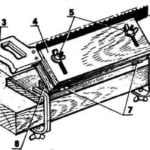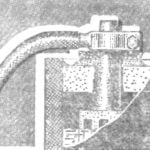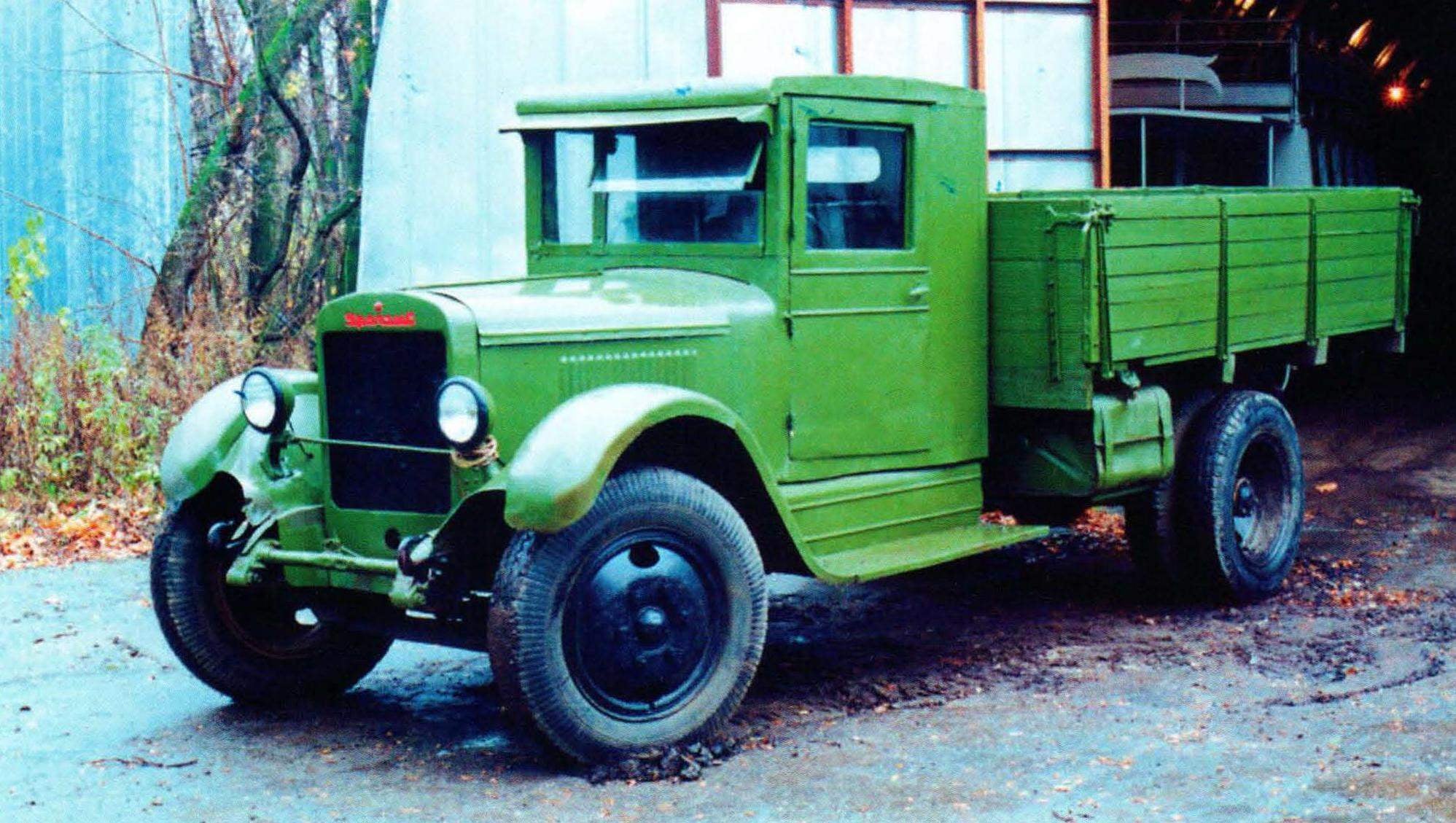Modernization of the machine had almost no effect on its appearance – with the exception of the decals, the car is almost not changed. All serial “355М” had a horizontal grille and was fitted with disc wheels, six Windows-“hearts”.
OPERATION. The car quickly gained respect from drivers. He was appreciated for reliability, durability, dependability, and excellent throughput, especially in rural terrain. Engine “Ural-353”, durable, with better starting properties than the ZIL-120 standing
the ZIS-5, in the most severe conditions worked flawlessly and was “tegometall” that has greatly enhanced the maneuverability of the cars. By the way, is the quality of the motor allow the truck not to be afraid of even a significant overload.
Four-speed transmission with well-chosen gear ratios was the perfect alternative to a five-speed “shilovskoe”. Very reliable and was carb-To-75. The incredible vitality of the basic units of the truck was allowed to carry on “355М” for 5 – 6 tonnes instead of the passport 3.5 tons And the simplicity of the design of the car and its excellent maintainability provide trouble free and long operation of the truck.
Despite the pre-war basis, “Ural-355М” largely surpass the post-war GAZ-51A and ZIL-164. He was faster, stronger, easier to maintain and repair; off-road spent considerably less fuel and oil than the ZIL, or even a GAZ-51 AND became one of the first domestic trucks with a curb weight ratio is less than one. Just in Miass during the seven years of production it produced 192 580 cars “Uralzis-355М” and “Ural-355М”. If at the time of manufacture of the truck depended on the demand for it, the model “355М” could to survive on the conveyor, at least a dozen years…
The geometric scheme of the car, “Uralzis-355М”
Truck”, Uralzis-355М”
“Uralzis-355М”. The driver
“Ural-355М” was good and the quality of the tractor he was hauling not only the “regular” two-axle trailer, but coped with the trains of two or three such trailers. Many drivers testified that where “sat” on the bridge even four-wheel drive GAS-6З, “Uralzis-355М” not only passed, but managed to drag the “63rd” in tow. Under the passport a maximum speed of 75 km/h this car easily accelerates to “hundreds”, and a speedometer graduated up to 100 km/h, simply rolls over. And this is without any consequences for “Uralets”. Is it any wonder that at a meeting in October 1960, at the USSR championship autocross, where the first was attended by Ural trucks, winner of the class was “Uralzis-355М”.
Naturally, the machines were and weaknesses, although they were manifested only in the instances of working in the complete absence of “human” roads and a fair and systematic overload.
MODIFICATION. The plant was built “Uralzis-355М” in two versions – flatbed truck with tent or without it, as well as bare chassis. Often the last mounted tankers for transportation of fuel or milk.
The most common after the tanks were trucks with trailers-raspuskanie who produced the motor company. No less popular among operatives were considered as truck tractors with semi-trailers side – it was the most rational way of increasing carrying capacity “355М”, which was officially able to tow a trailer with GVW of 5 t, but in reality, the weight of the trailer reached 9 t! Existed or modifications performed only in a few instances. In particular, in 1960 in Alma-ATA for repair and Assembly plant on the chassis “Ural-355М” was produced bus railroad layout, which had 28 seats and a total capacity of 40 people.
In our days throughout the former Soviet Union there are only about a dozen to a greater or lesser extent preserved trucks “Uralzis-355М”. Many have already forgotten about the existence of such a machine, but for those who worked on it who didn’t freeze in the heated cab of this truck even in severe frosts, who pulled them on dirt roads, the cargo twice exceeding the norm, who turned the wheel of his “three-ton” for 20 – 30 years, for these people, “Ural-355М” will forever remain in the memory of the most reliable partner and a real good friend…
Technical characteristics of the truck”, Uralzis-355М”
Wheel formula………………………………………………………………4×2
Full weight, kg………………………………………………………………7050
Curb weight, kg……………………………………………………..3400
Weight of transported cargo, kg…………………………………………..3500
Maximum speed, km/h………………………………………………75
Engine……………………………………………………..”Uralzis-353А”
Nominal engine power, kW (HP)…………………70 (95)
The working volume of the cylinder, l……………………………………………..5,55
Fuel consumption l/100 km………………………………………………….24
Tires……………………………………………….8,25-20 low pressure
Overall dimensions, mm………………………………..6290x2280x2095
Outside turning radius, m………………………………………………8,3
Recommend to read
 DRANK, SAW!
DRANK, SAW!
For the workman man a good tool — it is, as they say, is half the battle. For cutting tools (e.g., saws) it is important that it was sharp. With a significant amount of grinding you have... RELIABLE CONTACT
RELIABLE CONTACT
About how important proper contact of battery terminals, know of any motorist. But sometimes around the lead pin of the battery cracks, through which the electrolyte or its fumes get to...
 Autumn the evacuation of 1941, which resulted in the defense enterprises of the capital was transferred to the East of the country, has transformed a provincial town, which was the Ulyanovsk, Chelyabinsk and Miass, in the largest industrial centers, producing goods for needs of red Army. Thus in the Urals city of Miass appeared one of the most powerful Soviet enterprises for the production of military vehicles.
Autumn the evacuation of 1941, which resulted in the defense enterprises of the capital was transferred to the East of the country, has transformed a provincial town, which was the Ulyanovsk, Chelyabinsk and Miass, in the largest industrial centers, producing goods for needs of red Army. Thus in the Urals city of Miass appeared one of the most powerful Soviet enterprises for the production of military vehicles.